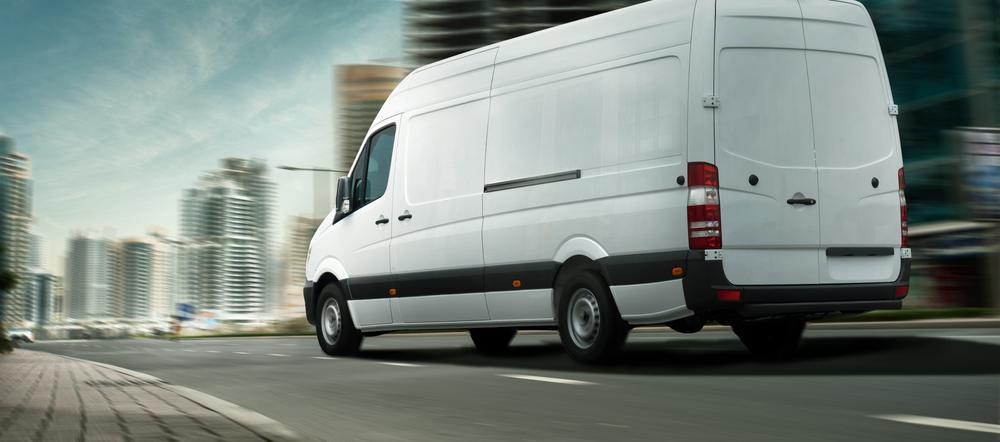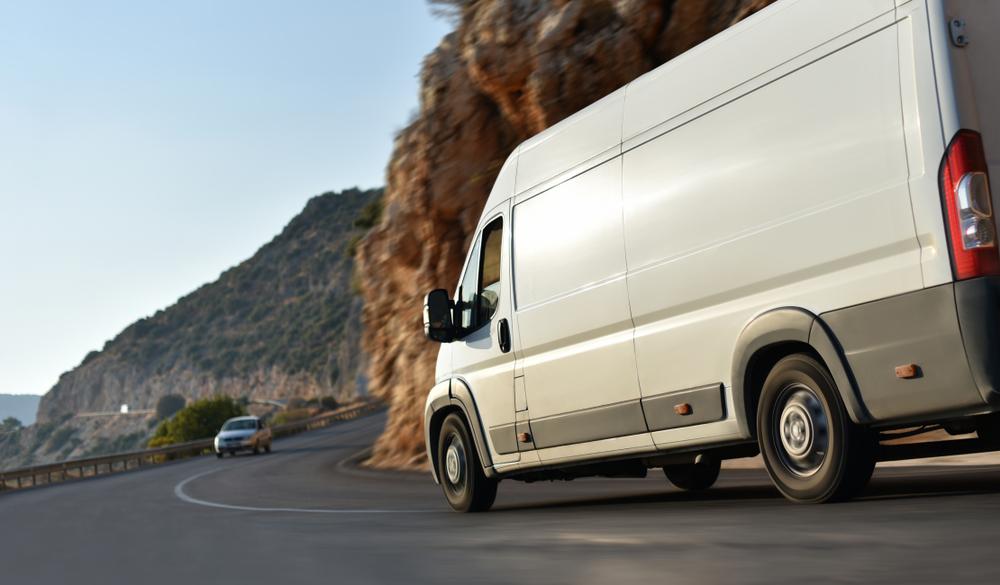
Transportation plays a vital role in facilitating global trade and commerce. The efficient movement of goods between producers and consumers is crucial for both businesses and economies to prosper.
In recent decades, one type of vehicle has revolutionized logistics operations worldwide - the van. Whether it's a dry van, refrigerated van, or flatbed van, shipping by van has become a ubiquitous practice in global supply chains.
This blog post aims to explore the concept and significance of van transportation in depth.

Evolution of Transportation in Shipping
For centuries, moving cargo over land relied primarily on animal-drawn carts and wagons. Basic ships and boats were used to relocate goods internationally via waterways since ancient times. The industrial revolution of the 18th century brought steam power and railroads, accelerating domestic and international trade.
In the early 20th century, motorized trucks gradually replaced horse-drawn carts for local and regional deliveries. After World War 2, mass production of commercial vehicles coupled with investments in road infrastructure ushered in the modern era of trucking.
Standardized containers and intermodal transport further boosted efficiencies. Developed in 1956, containerization allowed loading and unloading of cargo boxes directly from ships, trucks and trains without rehandling goods. This led to the widespread use of container ships, trains and seagoing container vessels.
Container trucks, more commonly referred to as containers or simply vans, became a mainstay for land transportation in logistics. Their standardized dimensions of 20 or 40 feet allowed direct transfer between different modes of hauling with ease.
Understanding Vans in Hauling
In logistics terminology, a van refers to an enclosed, insulated vehicle used for relocation of goods. The most common types include dry vans, refrigerated vans and flatbed vans. Dry vans are basic enclosed units suitable for general cargo that don't require temperature control.
Refrigerated vans maintain chilled or frozen environments through an integrated cooling system, ideal for perishables. Flatbed vans are open-top vehicles used to carry oversized or non-stackable items securely strapped to the platform.
Vans play a vital role across industries by providing a flexible and cost-effective solution for domestic, cross-border and international freight movements. Their standard dimensions allow loading directly onto trucks, trains and ships for seamless intermodal transfers without unpacking.
Multi-stop bulk deliveries, just-in-time manufacturing logistics and global supply chain operations heavily rely on efficient van shifting daily. The ubiquitous use of vans has revolutionized logistical capabilities and connectivity worldwide.
Dry Van Moving
Dry vans form the backbone of global logistics due to their versatility in relocating general cargo. Equipped with roll-up doors, these enclosed containers can accommodate various commodities like packaged consumer goods, auto parts, textiles, machinery and more.
Advantages of dry van shipping include weather protection, space utilization via stacking containers, security against theft and tampering.
Multi-stop consolidated loads optimize route efficiency, lowering transport costs significantly. Manufacturers benefit from consolidated shipments of outbound components and inbound raw materials.
E-commerce and 3PL companies leverage the flexibility of bulk lane rates and frequent routes. The automotive industry widely used van lines for transporting auto parts between factories and assembly plants. Other sectors dependent on dry van shifting are retail, industrial, technology and mining.
However, limitations include unsuitability for temperature-sensitive items and oversized cargo. Restricted humidity and ventilation control also prevents transportation of certain agricultural produce. Nonetheless, dry vans remain the backbone for smooth movement of the majority of global trade volumes efficiently.

Specialized Relocating
Certain cargoes demand specialized vehicles beyond basic dry vans. Refrigerated vans maintain precise temperature ranges for perishables like food, flowers, pharmaceuticals and more through an integrated cooling unit.
Seafood, meat, dairy and fresh produce heavily rely on reefer trucks for safe relocation internationally. The healthcare sector also uses refrigerated logistics extensively for medical supplies, vaccines and test samples.
Flatbed vans are open vehicles ideal for oversized, heavy or non-stackable items that won't fit inside closed containers. Common project cargo includes machinery, wind turbine components, construction materials and modular structures.
Steel coils, lumber, pipe reels and other industrial rolls are well-suited for flatbed transport. Off-highway agricultural equipment also uses flatbed trucks frequently for domestic and international deliveries.
Specialized equipment vans carry specialized cargo like boats, trains, mobile homes and modular building systems through customized designs.
Tankers transport petroleum products, chemicals and liquefied gasses in segmented compartments. Livestock carriers focus on safe and humane transportation of animals. Each format addresses unique requirements through engineered specifications.
Technology and Innovation Transporting
Digital technologies have improved van shipping significantly in recent years.
Fleet management systems leverage satellite-based GPS, on-board devices and cloud computing to provide real-time load tracking, ETA updates, driver behavior monitoring and more. This increases visibility, productivity and safety.
Here are some more impressive recent innovations:
- Telematics platforms digitize paperwork, automate document workflows and enable paperless exchanges.
- Blockchain integration streamlines customs clearance, payment processes and international trade compliance.
- Predictive analytics helps plan maintenance needs, optimize routes and resource allocation, reducing costs.
- Automated vehicles now transport cargo inside secured terminals through autonomous trucks and forklifts.
- Industry 4.0 innovations will likely see greater automation in loading/unloading, driving, warehouse operations and last-mile deliveries over the next decade.
- Use of renewable fuels, electric propulsion systems and efficiency improvements also enhance sustainability.
Continued innovation will shape the future of shipping through increased digitization, autonomous operations, optimized efficiency and lower environmental impact. Technologies have profoundly transformed the logistics landscape from fragmented industries to interconnected global supply networks leveraging smart transportation solutions.
Environmental Considerations
As transportation accounts for nearly 25% of global energy usage and carbon emissions, sustainability has become a priority. Companies are focusing on fuel-efficient fleets, optimized route planning, alternative fuels adoption and reduction of empty backhauls. Telematics also encourage eco-driving techniques among drivers.
Larger trucks and strategic load maximization lowers the carbon footprint versus multiple small shipments. Intermodal coordination leverages the green advantages of rail and cargo shipping wherever possible. Non-road technologies trialing hydrogen fuel cells and electric powertrains will advance the decarbonization of commercial vehicles.
Use of biofuels from renewable sources like plant oils, alcohols and biomethane helps reduce dependency on diesel. Strategic partnerships with supply chain stakeholders encourage emissions tracking and reporting for collaborative improvement. The ultimate goal is transitioning to net-zero logistics operations through innovative solutions and cross-industry cooperation.

Challenges and Solutions
Driver shortages affect many transportation companies struggling to recruit and retain qualified staff. Technology solutions assist with remote monitoring, training and predictive maintenance. Live mapping updates and digital document exchanges enhance driver experience.
Higher pay rates, signing bonuses and improved benefits programs help attract talent.
Traffic congestion delays impact fleet productivity and customer service levels. Strategies like dedicated lanes, off-peak deliveries, optimized routing with real-time traffic data help address this challenge. Intermodal coordination leverages alternative modes in dense city centers.
Rising operating costs from fuel, tolls, and regulations squeeze margins. Efficiency measures through platooning, aerodynamic retrofits and telematics lower fuel burn. Leveraging backhauls, consolidated loads and alternative fuels keeps expenses in check. Government incentives promote fleet electrification and renewable technologies adoption industry-wide.
Conclusion
Vans have profoundly transformed logistics capabilities by enabling the seamless flow of goods worldwide. Continuous innovation will shape the future through increased sustainability, automation, connectivity and optimized operations. Though challenges emerge, collaborative efforts across industries aim to overcome issues and deliver cargo safely, efficiently and responsibly.
As trade volumes grow, the efficient relocation of products using various types of vans will remain pivotal to economies and global supply chains. The shipping industry's reliance on this flexible and ubiquitous transportation solution shows no signs of slowing in the years to come.
Experience the power of van moving with A1 Auto Transport's extensive fleet of dry, refrigerated, and flatbed vans. Leverage cutting-edge technology and sustainable practices for efficient, cost-effective and environmentally responsible cargo shipping worldwide.






 Share on Facebook
Share on Facebook Share on LinkedIn
Share on LinkedIn Share on Twitter
Share on Twitter




 Google
Google  Instagram
Instagram  Trustpilot
Trustpilot 



